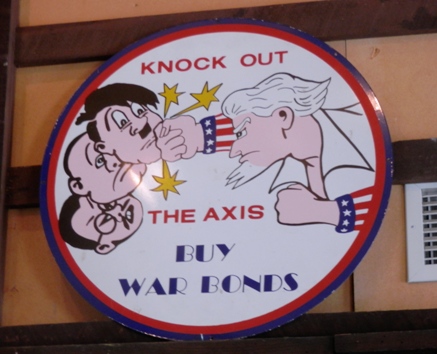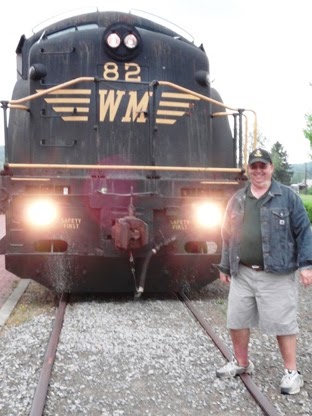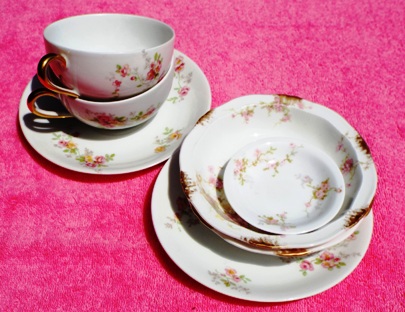...because
sometimes a picture IS worth a thousand words.
 |
| Mail Pouch Tobacco sign on a barn...a sure indication that you are in the south |
We
recently completed a journey of 3,959 miles.
For about 2,254 of those miles we had our RV in tow, and the majority of
those miles were in the mountains and hills of West Virginia. The West Virginia mountain scenery was
breath-taking...and sometimes the roads were, too!
 |
This one was a "mere" 8% grade for 3 miles. We encountered several that
were 8 1/2% grades, one of those 11 miles long, plus a lot of 180 degree
turns. West Virginia would be a much bigger state if it could be flattened out. |
We
actually started our West Virginia trip with a weekend at the Country Living
Fair in Lebanon, TN, a Christmas present from Mike.
 |
Mike Wolfe, owner of Antique Archeology and star of TV's
American Pickers was a featured panelist at the Country Living Fair |
If the New
River Gorge is one of the most spectacular natural settings in the state, the
New River Gorge Bridge near Fayetteville, WV only serves to emphasize both the
grandeur of the terrain and the skill and ingenuity of the designers, engineers
and builders. The third-highest bridge
in the country, and one of the longest steel-arch span bridges in the world, it
spans 1,700 feet and towers 876 feet over the river below.
 |
| Fog shrouds the New River Gorge Bridge on a rainy spring morning. |
Tucked
away in the hills of the Greenbriar Valley is a lovely historic town that was
voted "America's Coolest Small Town" by Frommer's Budget
Travel magazine in 2011.
Lewisburg was the site of Civil War battles, was an early center for
education, and is the county seat of Greenbriar County.
 |
Confederate dead from the Battle of Lewisburg are buried in this mass grave in the
shape of a cross outside of town. Originally interred in a church cemetery, the 95
unknown soldiers' remains were moved when parishioners objected to their burial. |
 |
Carnegie Hall, built with funds donated in 1902 by steel magnate and philanthropist
Andrew Carnegie as a classroom building for the Lewisburg Female Institute (later,
Greenbriar College for Women) now serves as a cultural center for the town. |
 |
We camped at the West Virginia State Fairgrounds in Fairlea, four miles
from Lewisburg. The fairgrounds can accommodate 400 RVs during
the state fair. It wasn't particularly crowded in early May |
People
have been "taking the waters" since 1778 in White Sulphur Springs,
WV. One of the most opulent resorts is
the Greenbriar Country Club, home of the PGA's Greenbriar Open. During the Cold War the Eisenhower
administration had a secret underground bunker built at the Greenbriar. We toured the Congressional bunker, but photographs aren't allowed.
 |
| View of the front of the Greenbriar as you approach through beautifully landscaped grounds. |
 |
| Main dining room of the Greenbriar. We had high tea here on a Sunday afternoon |
 |
| One of the ballrooms at the Greenbriar. Every area of the hotel is beautifully decorated. |
Seven
miles and a century south of Lewisburg is the old railroad town of Roncevetre, WV. The town has dozens of beautiful Victorian
homes but only a few functioning business.
One that we loved is a wonderful 140 year old hardware store.
 |
| The interior of the still-operating Martin & Jones Hardware in Roncevetre, WV |
Visits to Harper's
Ferry, Antietam Battlefield, and the National Cemetery at Sharpsburg add a sense
of realism to the history we learned from books, and provide a sobering reminder
of the toll in human lives and suffering that the American Civil War caused.
 |
After raiding the Federal Arsenal at Harper's Ferry on the night of Oct. 16, 1859,
Abolitionist John Brown and his men took refuge in this (reconstructed) fire engine
house, which became known as John Brown's Fort. They were captured two days later. |
 |
The Battle at Antietam Creek, Sept. 17th, 1862 resulted in an estimated 3,650 killed, 17,300
wounded and 1,770 captured or missing on both sides. Six other Civil War battles had more
casualties but were all over multiple days. This was the bloodiest single day in American history. |
 |
| The National Cemetery at Sharpsburg, MD, lies adjacent to the Antietam Battlefield |
Since we
were only about 70 miles away, we decided to spend a day at Baltimore's Inner
Harbor.
 |
USS Constellation, launched in 1854, is the last sail-only warship designed and built
by the Navy, and is the second Navy ship to carry that name. There is now a third
USS Constellation (CV-64) a Kitty Hawk-class aircraft carrier launched in 1960 |
 |
Fort McHenry. Francis Scott Key, held captive on a British warship during an overnight bombardment
in the War of 1812, saw the flag still flying when dawn came. In 1814 he penned a poem entitled
"Defense of Ft. McHenry", the words of which later became the lyrics of the Star Spangled Banner |
 |
Seven Foot Knoll Lighthouse, constructed 1854-55 at the mouth of the Patapsco River,
the northern reach of which is Baltimore Harbor. The lighthouse is made of wrought
iron. It was decommissioned in 1988 and moved by barge to the Inner Harbor |
 |
| Camden Yard, home of the Baltimore Orioles, sits just blocks from the Inner Harbor |
Heading
west from Harper's Ferry, we made a quick detour into Pennsylvania to visit
Fallingwater, one of architect Frank Lloyd Wright's masterpieces, near Mill
Run.
 |
Fallingwater, built in 1936, was the summer home of Edgar Kaufmann, Sr. of Pittsburgh
and his family from 1937 until 1963, when his son entrusted it to the Western Pennsylvania
Conservatory. The home contains original furniture and priceless original art works. |
If you grew up in the late 1960s and early 1970s
you probably remember being approached at the airport by orange-robed Hare
Krishna (more formally, members of the International Society of Krishna
Consciousness) or seeing the whirling, chanting devotees on a college
campus. We visited Parbhupada's Palace
of Gold in the remote hills outside of Moundsville
 |
Begun in 1972 as a simple residence for the founder of the International Society of
Krishna Consciousness, Srila Prabhuapada, who died in 1977 before its completion.
The Palace of Gold is now a monument to him. |
 |
Beautiful peacocks roam the grounds. While the interior of the Palace is beautiful, four
decades of neglect have taken a toll on the exterior. A five-year, $4.27 million restoration is
underway, funded in part by the sale of the rights to oil and gas reserves under the property. |
Moundsville offered a number of interesting stops
including the Marx Toy Museum (see our
blog dated June 12, 2015); the Fostoria Glass Museum (no pictures
permitted); Grave Creek Mound, the former West Virginia Penitentiary; and the
now-closed Circus / Carnival Museum. Mike
is often able to get people to see
things his way. The Circus / Carnival Museum was located on the second floor of
an ice cream parlor but the original owner has sold the ice cream business to a
nice young couple. When I asked the proprietress
if we could tour the museum, I was firmly but politely turned down and told
that the upstairs was no longer open and that items collected over the decades
were being sold off. Upon returning from the restroom, I discovered that Mike had convinced the ice cream parlor owner to allow us to go upstairs. She even
joined us and chatted about the collection.
What a treat! Too bad it is being
dispersed.
 |
Grave Creek Mound, a 2,000 year old burial mound created by the prehistoric
Adena people in what is now Moundsville, WV |
 |
The West Virginia State Penitentiary, built by convict labor, operated from
1876 to 1995. It is now open for tours. |
 |
| Cell in the West Virginia Penitentiary. |
 |
Some of the toys and artifacts in the Circus / Carnival Museum, which
is now closed. The collection is being sold off in pieces. |
 |
Although the museum is now closed, Mike talked the owner of the
ice cream parlor, located on the first floor, into giving us a peek. |
Southeast of
Morgantown is the village of Arthurdale, established in
1933 as the nation's first New Deal Homestead Community. Eleanor Roosevelt took a special interest in Arthurdale, and visited the community often. Not far away, in Quiet Dell, is a small CCC (Civilian
Conservation Corps) Museum.
 |
Arthurdale was one of several communities build to help those who lost everything
in the Great Depression. This was one of about 165 homes in the community.
The Federal Government liquidated its holdings in the social experiment in 1947 |
 |
A small museum at Arthurdale contains photos, along with political memorabilia
and examples of patriotic wartime propaganda, including the "Buy War Bonds" sign |
 |
The Civilian Conservation Corps museum at Quiet Dell, WV includes this original
housing unit from a CCC camp. The CCC was started by Executive Order 6101 on
April 5, 1933, and lasted until 1942, when WWII required all able-bodied men. |
Many West
Virginia towns, including Weston, had thriving glass and pottery
manufacturing. Unfortunately, few
remain. Weston is also the site of the Citizen's
Bank Building, an Art Deco showplace built in 1928-1930. The wrought iron work
is by noted artist Samuel Yellon and the interior woodwork is hand carved
American walnut.
 |
| Weston Art Glass, made locally, in the Museum of American Glass in Weston, WV |
 |
Citizens Bank Building, believed to be the tallest single-story building
in the U.S. is made from Indiana limestone in beautiful Art Deco style |
 |
The carved American walnut and plaster ceiling. Bank employees
were very friendly and cooperative when we appeared with our
cameras, and even gave us a tour of the bank's Board Room |
 |
A local motorcycle club was holding a fund-raiser called "Thunder on Main Street"
to benefit local children's charities while we were in Weston. The rainy Saturday did
little to bring out the crowds, but the participants didn't seem to mind the weather. |
 |
Train ride on the Durbin & Greenbriar Valley Railroad out of Elkins, WV.
The New Tygart Flyer, which normally makes this run, was in the shop for
repairs so our train was pulled by the Western Maryland Engine No. 82 |
 |
| View from the platform between cars as the train makes a left curve |
 |
| The High Falls of the Cheat River, our destination on the New Tygart Flyer trip |
 |
We encountered this dog and another, both wearing multiple electronic collars, at
the Falls. The Conductor told us they are "bear hunting" dogs. The owners track
the dogs through GPS units in the collars, and thus are able to locate the bears. |
The only
remaining covered bridge on a Federal Highway is located in Philippi, WV. The town was also the site of the first land battle of the Civil War on June 3,1861. Another historic stop in this part of the
state is Jackson's Mill, where three generations of the family operated grist
and sawmills. The most famous member of
the family was General Thomas "Stonewall" Jackson.
 |
| Exterior of the covered bridge at Philippi, spanning the Tygart Valley River |
 |
| The interior of the bridge shows the craftsmanship that went into its construction. |
 |
Jackson's Mill, on the West Fork River, near Weston. The property is also
home to the State 4-H Camp (the first state 4-H camp in the nation)
and West Virginia University's Jackson's Mill Farmstead |
One of our
favorite quirky stops was the Trans-Allegheny Lunatic Asylum in Weston. Construction
was actually started prior to the Civil War, but not completed until 1881. A
state-of-the-art facility for its time, it was originally designed to treat 250
individuals but at its peak in the 1950s housed as many as 2,400 patients. It closed in 1994.
The Blennerhassett
Mansion was reconstructed on the original mansion's foundation, on an island in
the Ohio River near Parkersburg, and is now a West Virginia State Park. The Blennerhassett family only lived there a
few years because in 1806 the wealthy Irish immigrant and landowner was accused by
President Thomas Jefferson of treason. Aaron
Burr and Harman Blennerhassett allegedly conspired to raise an army, conquer northern
Mexico (present-day Texas), and establish their own southwest empire. Burr was acquitted at trial. Bennerhassett, never tried, was released from
prison but was financially ruined.
Just
across the Ohio River from Williamstown, WV lies the city of Marietta, OH. It
was here that Meriwether Lewis and William Clark assembled the party that would
explore the American west. In Muskingun
Park a statue commemorates their expedition. Across the Muskingum River the historic district that was once Harmar Village but is now part of Marietta, is another interesting stop.
 |
This statue of Lewis and Clark entitled "A Nation Moving Westward" was dedicated
in 1938. It is the work of Danish-American sculptor Gutzon Borglum, who later
designed and sculpted the figures of the four presidents on Mt. Rushmore. |
 |
Across the Muskingum River, in what was once the Village of Harmar,
check out who we found hiding out in an alley - - Big Boy, in person! |
We spent
Memorial Day weekend at Chimney Rock RV Resort near Harrodsburg, KY, just a short
drive from the Shaker Village of Pleasant Hill.
 |
Hand-built stone wall, about 4 feet high, near the Shaker Village of Pleasant Hill.
There are literally miles of walls like this in the area. |
 |
After a leisurely Saturday morning breakfast in the Blue Moon Cafe, we
strolled the streets of the charming downtown area of Harrodsburg, KY |
 |
Harrodstown, established in 1774, was the first pioneer settlement in Kentucky. As the population
grew, a bigger fortification, Ft. Harrod was built to protect the settlement. A full-scale replica
of the fort was constructed on the original site in the 1950's. Today it is a Kentucky State Park
|
 |
We have, and I guess always will, love the water. Memorial Day 2015 found us
right back where we have spent dozens of holidays - - having dinner at a marina
on a lake...this time at Chimney Rock Marina on Lake Herrington in Kentucky |
Like the
antique postcards that I collect on our travels, we hope that someday our Postcards
from the Road evoke fond memories of great Road Stories.











































































